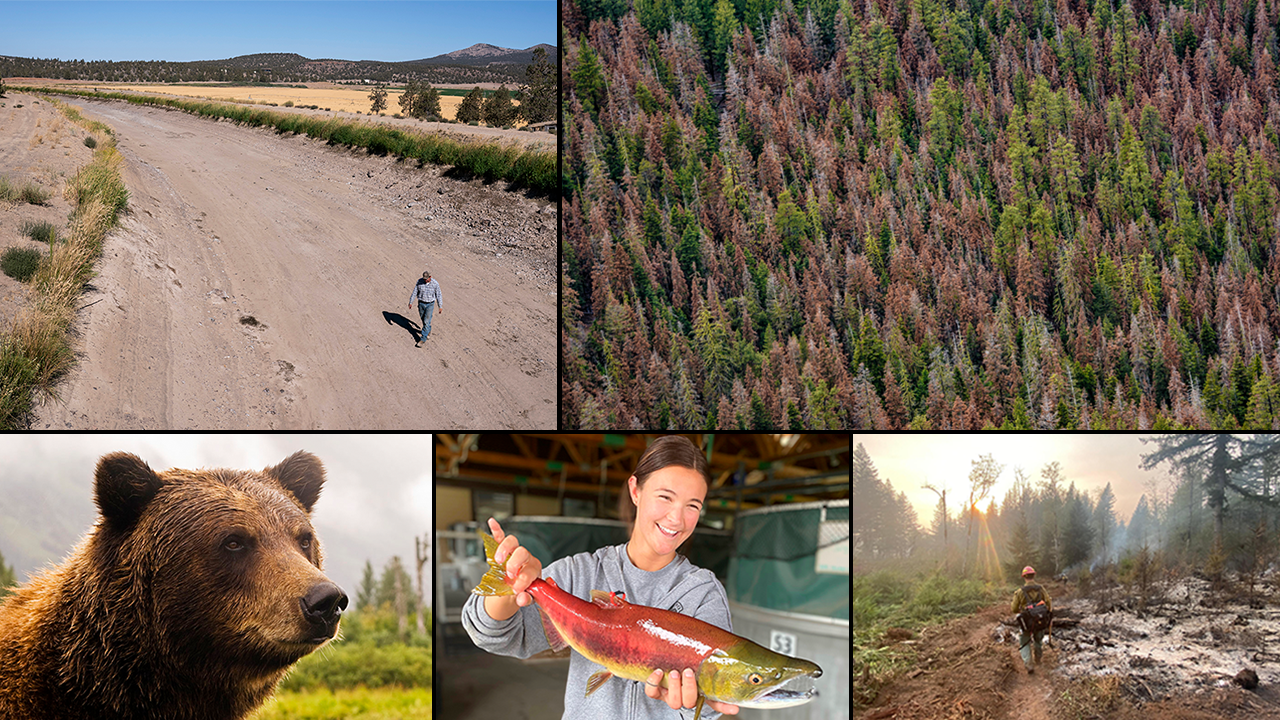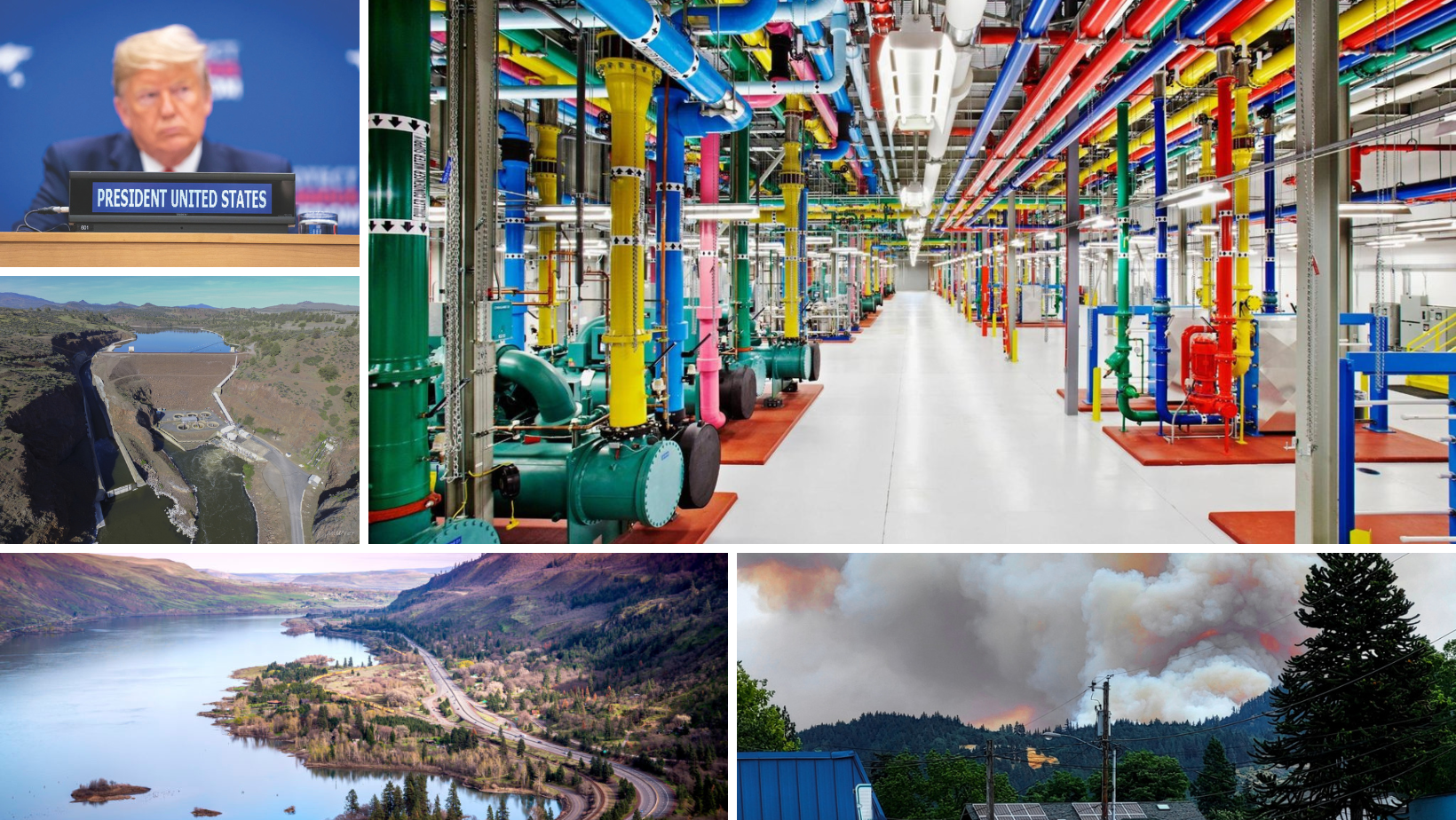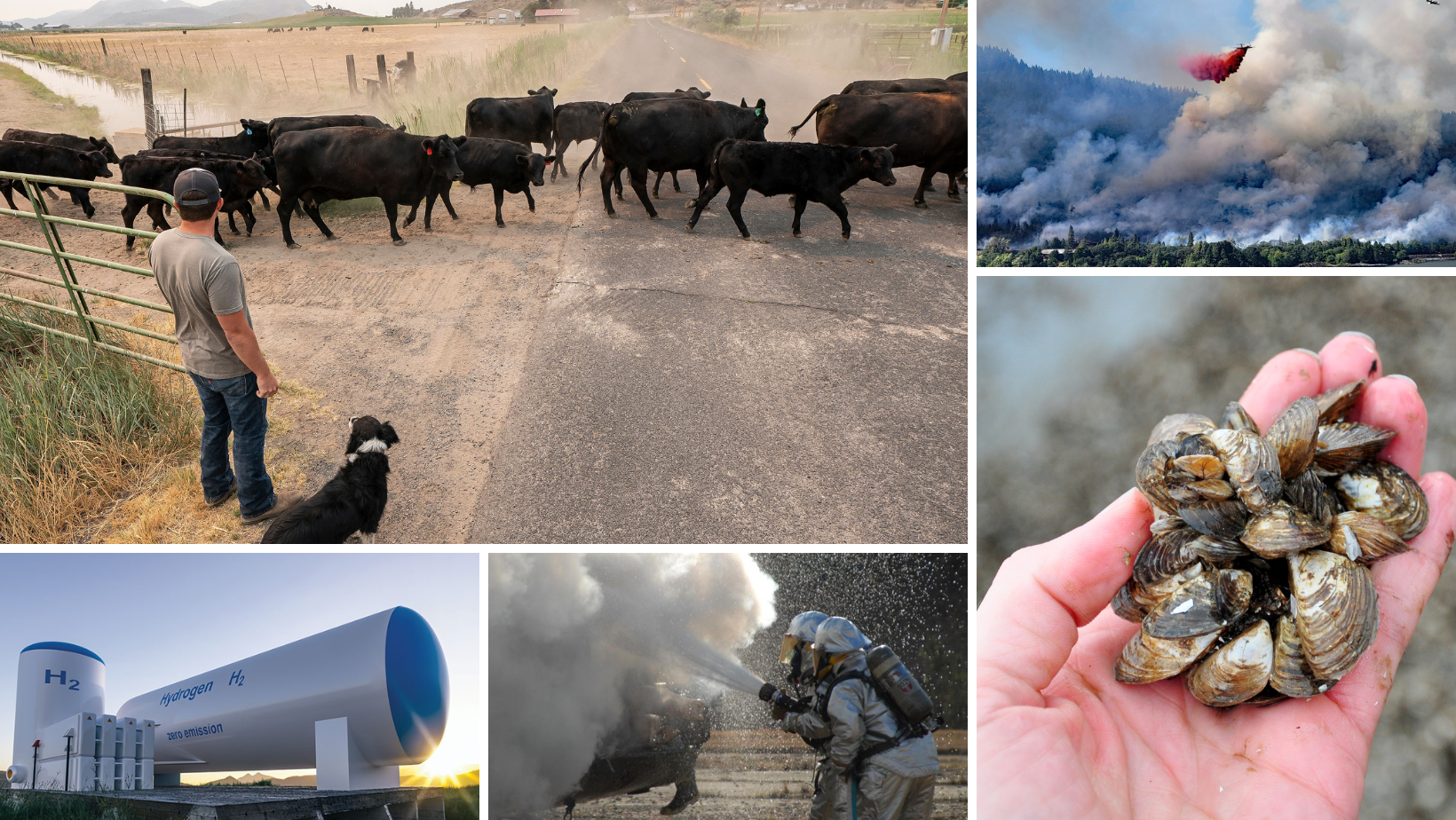Drought persists, firs fade and history repeats. Climate news is becoming more predictable. That’s not great

By Chuck Thompson. December 23, 2022. In December, Mount Rainier National Park announced the first-ever recorded moose sighting in the park.
In June, the Washington Department of Ecology confirmed the removal of more than 35,000 drums of industrial waste from the Pasco Landfill Superfund site.
And, oh yeah, in May, the Society of Professional Journalists honored Columbia Insight with an award for environmental reporting in its 2021 Northwest Excellence in Journalism awards.
Important events, for sure, but each was nudged out by 10 others on our annual list of biggest environmental stories of the year.

Columbia Riverkeeper/USACE
Back in 2019, Columbia Insight reported on demands from Yakama Nation Fisheries and Columbia Riverkeeper for the federal government to clean up contamination around Bradford Island in the Columbia River; for decades the U.S. Army Corps of Engineers used the island near Cascade Locks as a dumpsite for toxic waste from the Bonneville Dam Complex. On March 17, the EPA listed Bradford Island as a Superfund site. The designation allows the EPA to clean up the site and force the parties responsible for the contamination to either perform cleanups or reimburse the government for the work. Riverkeeper and environmental groups around the Pacific Northwest hailed the listing as a “huge victory.”
MORE: Waste Land: Where the aluminum bodies are buried in the Columbia Gorge

Princess Lodges
In January, Columbia Insight was only place reporting on the status of a canceled federal government study looking at reintroducing grizzly bears into the North Cascade Range. In November, the idea got extensive national attention when the U.S. Fish and Wildlife Service and National Park Service resurrected the plan. How many more years of wrangling will it take to decide whether or not grizzlies will make it back to Washington? “Best case scenario, we’re looking at about a year before there are any decisions about grizzly bears in the North Cascades,” Andrea Zaccardi, carnivore conservation legal director at the Center for Biological Diversity, told Columbia Insight.
MORE: Government to consider transplanting grizzlies to Cascades

Chuck Thompson/Columbia Insight
Speaking of stories available only in Columbia Insight, in July the Hood River County (Oregon) Board of Commissioners heard a presentation from a mysterious company called GeoX to construct what would be one of the largest geothermal plants in the state, on the northern slopes of Mount Hood. Perhaps because the idea is in its early stages, or because so little information is available about GeoX, the story attracted little attention outside the local area. If the plan moves forward, however, the environmental repercussions will be massive.
MORE: New plan would make Mount Hood site of massive geothermal plant

Amazon data centers near Boardman, Oregon (Google Earth)
State of Oregon data showed carbon emissions in Morrow and Umatilla counties have skyrocketed (more than 500% in Umatilla) with the construction of massive Amazon data centers over the last decade. “The electrical utility serving Morrow County once had some of the cleanest power in the state,” reported The Oregonian. “While Amazon isn’t solely responsible for the increase, the additional power use matches the annual household power consumption of 200,000 homes.” The tech giant has received tax breaks worth more than $160 million in Oregon, which offers some biggest tax breaks for data centers in the country.

Eagle Fish Hatchery, Idaho (Travis Brown/IDFG/AP Photo)
Although stopping short of endorsing Idaho Rep. Mike Simpson’s proposal to breach four dams on the Snake River, a pair of Biden administration reports released in July called removing the dams “essential” to salmon recovery in the Columbia River Basin. In November, the Federal Energy Regulatory Commission gave its approval to remove four dams on the Klamath River in California and Oregon, in what will be the largest dam demolition in U.S. history. In December, the Federal Reserve System announced Washington state could receive as much as $40 million in federal funds for dam removal projects, and studies to remove barriers to fish passage in the Olympic Peninsula, Puget Sound, Columbia River watershed and Yakima Basin. Dam opponents may finally be feeling they’re swimming with the prevailing current.
MORE: ‘The stars are aligned’: Rep. Mike Simpson breaks down plan to breach Snake River dams

Oregon State Police
In 2021 Oregon’s wolf population showed “anemic growth” as poaching incidents increased—but 2022 brought new force to efforts to find and punish the illegal killing of animals. Oregon funded a new Stop Poaching Campaign, increased poaching penalties, added four state troopers and a sergeant to increase poaching detection and, most importantly, hired a new special prosecutor, Jay Hall, to tackle wildlife crimes. In March, the Oregon Wildlife Coalition began funding the state’s first standardized cash rewards program for reporting poaching of nongame species, such as bobcats, beaver, lynx and otter. In December, the U.S. Fish & Wildlife Service offered a $5,000 reward for information leading to the arrest of those responsible for illegally killing a collared gray wolf in southern Oregon. To report a case of wildlife poaching in Oregon contact the Turn In Poachers line (800-452-7888) or TIP@osp.oregon.gov.
MORE: Amid spike in thrill kills, wolf poisonings, Oregon strengthens anti-poaching efforts

Nakia Creek Fire, Washington (InciWeb)
A wet spring delayed the summer onslaught. But August 1 brought a lightning storm that started almost 30 fires in Oregon’s Willamette National Forest; eventually called the Cedar Creek Fire, it burned more than 127,000 acres. By October, a string of blazes across the region—including Washington’s Bolt Creek Fire—had created toxic air across much of Washington and led to international coverage of Seattle and Portland having the worst air quality on the world. Our air quality “was worse than in places like Beijing, New Delhi and Lahore, Pakistan” reported NBC News. There was tempered “good” news. In late October, the Northwest Interagency Coordination Center estimated wildfires had burned “only” 536,693 acres in Oregon in 2022, compared with 828,777 acres in 2021. In Idaho, 414,997 acres burned in 2022 compared with 431,129 acres in 2021. Such stats surely came as cold comfort to the thousands of people evacuated from their homes in 2022 due to fires, including the entire town of Lind, Wash. (pop. 500).
MORE: Behind the line: The inside story of wildland firefighters

City of Oregon City
A study released in September 2022 in the journal Geophysical Research Letters compared the Pacific Northwest’s record 2021 heat wave to a once-in-10,000-year event. Apparently, its authors were writing from an air-conditioned basement. Record heat once more pummeled the region in 2022. In July, Seattle set a new record with six straight days of temps above 90. In early August, heat alerts were in place across the Pacific Northwest, with 11 million people under excessive heat warnings and another 12 million under heat advisories. By the first week of September, Boise had topped 100 degrees 26 times, blowing past the record of 20 days set in 2003. In late September, Karen McKinnon, lead researcher on that Geophysical Research Letters, study told UCLA College: “The good news is that we don’t find evidence that events this extreme should start happening regularly. The bad news is the summer of 2022 brought record-breaking heat waves … if 10,000-year events keep happening, that suggests there may be something missing in the climate model we used.”
MORE: Scientists engineer a better air conditioner for hotter Northwest summers

Irrigation Canal, Madras, Oregon (AP Photo/Nathan Howard)
Summer hadn’t even started when on May 31 the U.S. Drought Monitor declared 57.79% of the Pacific Northwest was in drought. The following months brought little change. “We’re just trying to figure out how to survive,” Oregon State Sen. Lynn Findley of Vale told his eastern Oregon constituents during a virtual talk. In the same event, State Rep, Mark Owens said drought is a life-changing issue for farmers and ranchers—some people had sold their cattle because they couldn’t afford hay, and many had allowed land to go fallow, which means they won’t produce crops this year. In January, a report from the Department of Commerce said Idaho, Oregon and Washington had collectively lost at least $3 billion in 2021 due to weather disasters. It remains to be seen how 2022 stacks up statistically, but after an unseasonably dry autumn, the ledger likely won’t be in the green.
MORE: Oregon Rep. on drought: ‘We’re trying to figure out how to survive.’

USFS
Fir trees in Oregon and Washington died in record-breaking numbers in 2022, according to research conducted by the U.S. Forest Service. Called “Firmageddon” by researchers, the “significant and disturbing” mortality event was the largest die-off ever recorded for fir trees in the two states. Driven by drought, the Forest Service observed fir die-offs occurring on more than 1.23 million acres (over 1,900 square miles) in Oregon and Washington. “It is unprecedented, the number of acres we have seen impacted,” said Daniel DePinte, who led the survey. First reported by science writer Nathan Gilles for Columbia Insight, the story spread across national and international media, from Mother Jones to Esquire to The Guardian, becoming the biggest—and perhaps most portentous—environmental story to come out of the Pacific Northwest in 2022.
MORE: Massive die-off hits fir trees across Pacific Northwest
With your support Columbia Insight will continue reporting on the most critical environmental issues affecting the Columbia River Basin in 2023.
Chuck Thompson is editor of Columbia Insight.











Great summary. Great reporting! This is really good, pertinent info to read about the first time, and to re-read, and remember, again.